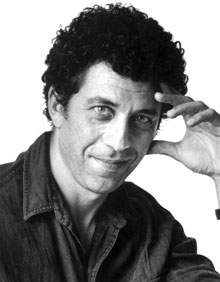This week the New England Literature Program (NELP) held its mass meeting. As a former NELP student, I wanted to commemorate this week, and encourage new students to apply to NELP, by writing about one of my most clear memories from my time spent in the woods.Â
Mt. Chocorua looks and feels like it sounds: like someone took a bite out of its peak and left the remainder standing naked and incomplete against the surrounding hills. Rising only 3,500 feet in the air, Mt. Chocorua is truly menacing not due to its height, but because of its confusing and harsh trails, its jagged climb. It was too cold for an early May day, but my group and I faced the incline and the clouds with palpable eagerness for our first multi-day hike.
At the start of our ascent, I carried only the shelter of my hiking pack. Its contents were my only difference between unadulterated wilderness and a few comforts of the modern world, and I focused on this realization instead of memorizing Robert Frost’s Time Out, like I was supposed to be doing. As I began lining my feet with the trail, I mentally repacked my bag, chronicling its components– my portable refuge– with relief.
On the journey upwards, my shelter was my backpack. I occupied no space permanently and felt rooted only to my legs and my possessions. Then, as the sun began its descent, and the wind stung harder without the protection of its rays, we reached at 3,000 feet in the air our destination. As I turned, and looked up, I caught my first glimpse of a large cabin, an astonishing view and massive chains.
The Jim Liberty Cabin, as we soon discovered it is called, is secured onto the rocky face of Mt. Chocorua by two enormous metal chain-links, that stretch over the roof and firmly attach to the earth on either side. The chains– set in place because the structure formerly known as the Jim Liberty Cabin blew off the mountain in a vicious winter storm, and its replacement needed more reinforcement– each form a triangle with the ground.
With this knowledge, I approached the cabin entrance with trepidation and concern. I was thousands of feet higher than I usually am, had no means of technology and the only other humans within several dozen miles of me were my five co-hikers. The Jim Liberty Cabin, then, became the focal source of my comfort. Hiking is an exercise full of discomfort, so I desired a shelter that would allow me to relax my calves and lower back, escape the darkening chill and warm my feet. The Jim Liberty Cabin granted none of my dreams, leaving only the image of its nine wooden planks, latched to the walls in groups of three stacks, in three of the corners of the cabin’s only room, etched into my mind forever. When we closed the heavy wooden door, which terrifyingly locked solely from the outside, we found aggressive, deep scratch marks facing the inside of the cabin. We began searching for alternative emergency exits at once.
I spent my only night on Mt. Chocorua in a state of rest more than sleep. My body never adjusted to the harshness of my non-bed, and I was too distracted by the howling of the wind whipping around the roof to relax. Still, I was sheltered. I was surrounded by four sturdy walls, two rattling chains, and five snoring humans. I was not in any immediate danger, needed no medical attention or suffered no emotional damage. I was merely uncomfortable. The cabin, in all its horror, allowed me to safely occupy this once hazardous spot, away from the wind and the weather and the elements of night we miss while inside. It had no heat or pillows or outlets, but it provided basic structure and coverage, enough for six tired hikers to lie still for a few hours and wake to a vast sunrise. Slowly, we woke from light sleeps and stretched our eager legs. As we assembled our belongings, prepared to summit Mt. Chocorua for the first time, we reflected on Jim Liberty’s graciousness and gift. Our peers on the trip were scattered about the mountain sleeping in tents, and although my hips ached from their spot on my plank, I knew it was preferable to the harsh ground. A few hundred feet away, we turned back to our interim shelter. “To Jim Liberty!†we shouted, and began to climb.





